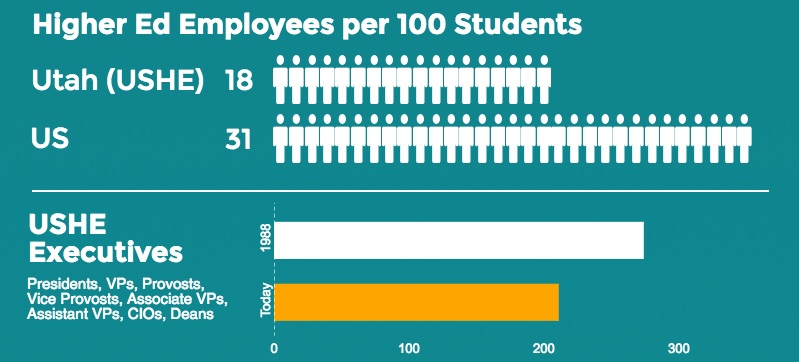Cost and funding
A combination of relatively low costs and low tuition rates make USHE institutions among the most efficient and affordable in the country. USHE’s four-year institutions have the the fourth-lowest tuition and fees in the U.S., and the average tuition funds per full-time equivalent (FTE) student at a USHE institution are 14% below the national average. The state’s low tuition rates are due, in part, to comparatively strong support from recent increases in state appropriations by the Utah Legislature.
However, USHE institutions are still funded 18.9% less per FTE than before the recession, and are 9% below the national average. USHE institutions also maintain comparatively low costs, ranking 45th in overall educational revenues per FTE, $1,824 less than the U.S. average.
Degree and certificate efficiency
Simultaneously, Utah is among the top ten states in the degrees and certificates awarded each year per student (26 degrees per 100 full-time-equivalent students). This demonstrates that in spite of a low amount of funding per student, USHE produces graduates at a high rate.
Administration and staff
Despite popular grumblings about what many believe is administrative bloat in higher ed, USHE actually has fewer employees per 100 FTE students today than the national average. Thirty years ago, there were 11 employees for every 100 FTE students in Utah, compared to an average of 23 nationally. Today, there are 13 employees per 100 FTE students (31 nationally). This represents an increase of only 18%, while the student bodies of Utah’s public higher ed institutions have more than doubled in that same time frame, from 56,600 in 1988 to 111,345 in 2016.
In fact, USHE executive positions have actually decreased from thirty years ago. In 1988, there were a total of 274 executive positions at all of Utah’s public colleges and universities. Today, there are only 211, representing a reduction of 23%.


